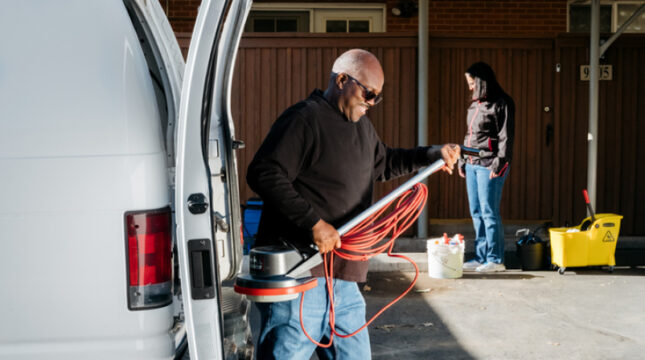How does the SBA microloan program work?
While any eligible small business can apply for an SBA microloan, the program is designed to help historically underserved populations, including women, minorities, veterans and low-income entrepreneurs who may have difficulty obtaining small business loans from banks.
While the SBA establishes guidelines for the microloan program, it doesn’t provide loans directly to small businesses. The SBA lends financing to authorized intermediary lenders, which are nonprofit community-based organizations with lending experience. These intermediaries manage the microloan program for eligible borrowers.
SBA microloans are available in amounts of up to $50,000. The average microloan amount is around $13,000, and interest rates generally range from 8% to 13%. However, lenders and borrowers work together to negotiate interest rates on a case-by-case basis.
The maximum loan term for an SBA microloan is six years, but terms vary based on how much you borrow, what you plan to use the money for and the lender’s requirements.
Who is eligible for a microloan from the SBA?
Each intermediary lender has its own rules about loans and credit. Most of the time, intermediaries need some kind of collateral in addition to a business owner’s personal guarantee.
While microlenders will set their eligibility and repayment terms, the following are common requirements:
Registration and location
Your business must be registered, and it must be located and operating legally in the United States or its territories.
Investment
Lenders want to invest in businesses that will be successful. To demonstrate your commitment to launching or growing your business, you’ll need to show you’ve already invested time and your own money in your business.
Financing options
The SBA microloan program is designed for people who are unable to secure funding from other sources. So, you may need to show that you tried and were unable to get business financing from other lenders.
How to apply for an SBA microloan
Since the Small Business Administration provides microloan funds to intermediary lenders, you’ll need to work with an SBA-approved lender to apply for a loan.
In some situations, you may need to participate in training or planning sessions to help you launch or expand your business before the lender reviews your application.
Each lender that participates in the SBA microloan program has its own eligibility requirements and is responsible for making loan decisions. The Small Business Administration does not evaluate loan applications.
In general, here are the factors SBA microloan lenders will likely consider when making a loan decision.
- Credit history. Just as a bank or credit union reviews your credit history when you apply for a mortgage or auto loan, the lender will review your credit history when applying for an SBA microloan. But don’t let a less-than-perfect credit history stop you from applying. Business owners with poor credit scores and bankruptcies may still qualify.
- Collateral. Many SBA microloan lenders require collateral to secure the loan. You can use business or personal property, such as equipment or a vehicle, as collateral. If you’re unable to repay the loan amount you borrow, the lender has the right to take your property and sell it as payment for the loan.
- Business plan. The lender may ask you to provide a business plan to show how you plan to use the money and what your financial projections are for the future.
- Ability to repay. Lenders want to know you’ll be able to repay the loan if they approve your application. If you’re just getting started, you might need to provide financial projections with your future estimated revenue stream. Remember, the maximum term is six years and varies by lender.
How can I use the money from an SBA microloan?
Microloans can support small businesses in several ways. Use them to rebuild, reopen, repair, upgrade or improve your small business with a budget of less than $50,000.
If your loan application is approved, you can use the funds for:
- Working capital (cash flow)
- Equipment and machinery
- Supplies and inventory
- Furniture and fixtures
You can’t use the money to pay off existing debt or buy real estate.
The type of equipment and supplies you need will vary, depending on the type of business you have. So, let’s take a look at some specific ways individual businesses can use the money.
Let’s say you have a clothing boutique. You were strapped for cash when you opened, so you used secondhand supplies, but now you’re ready to give your startup a facelift. You can use the money from an SBA microloan to buy new shelves, racks, mannequins and hangers to display clothing.






